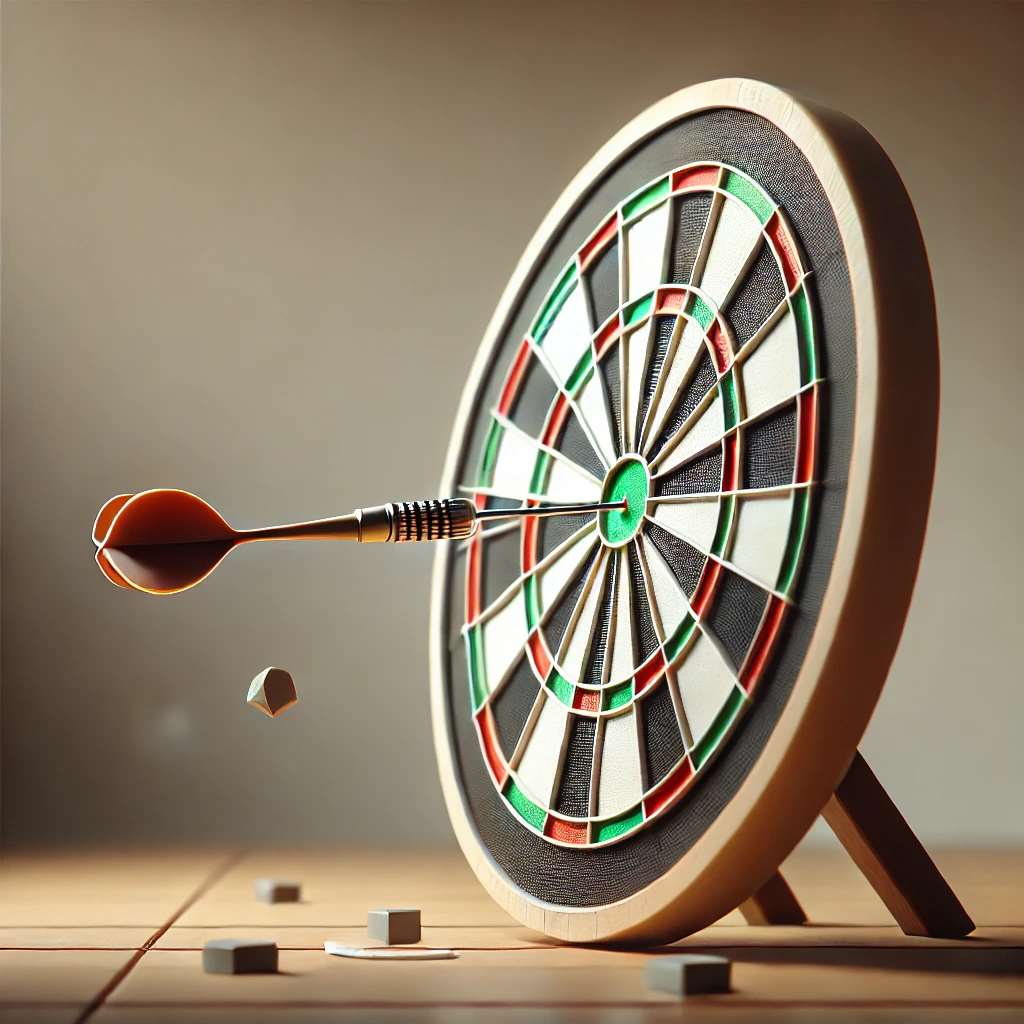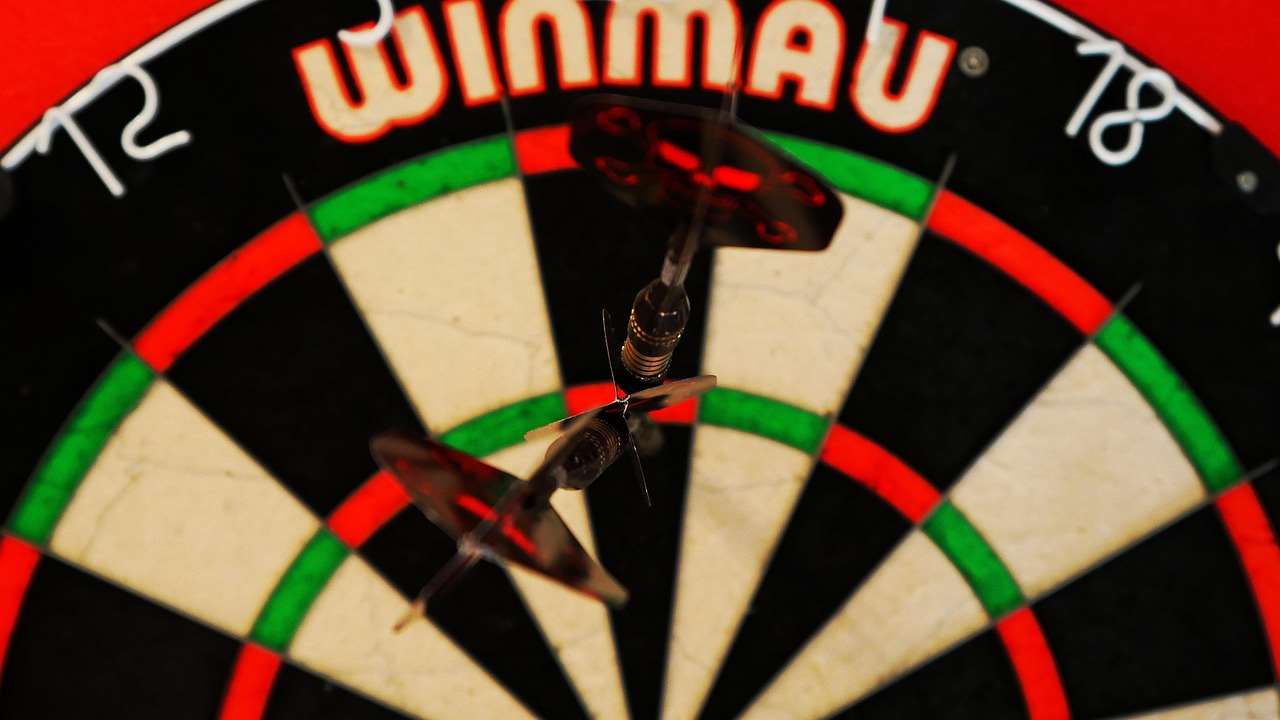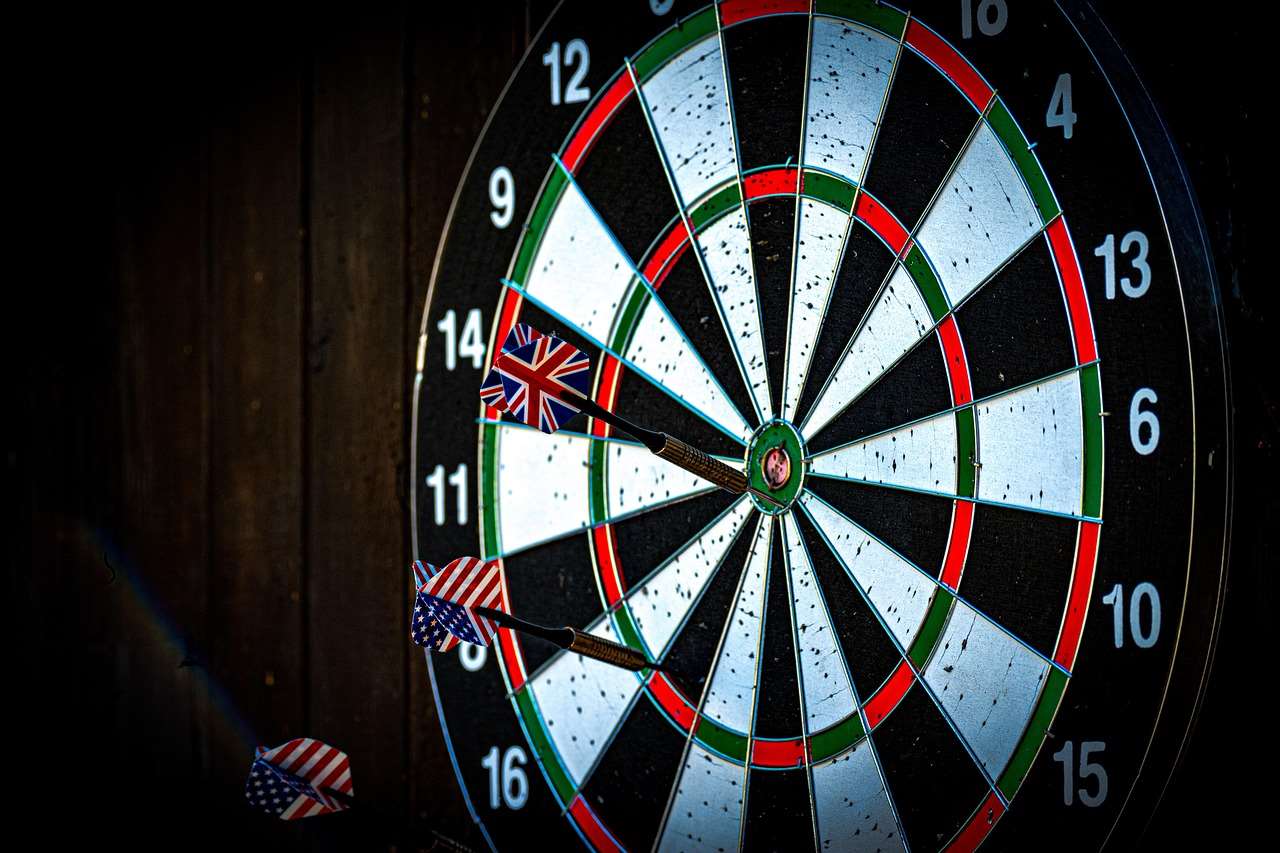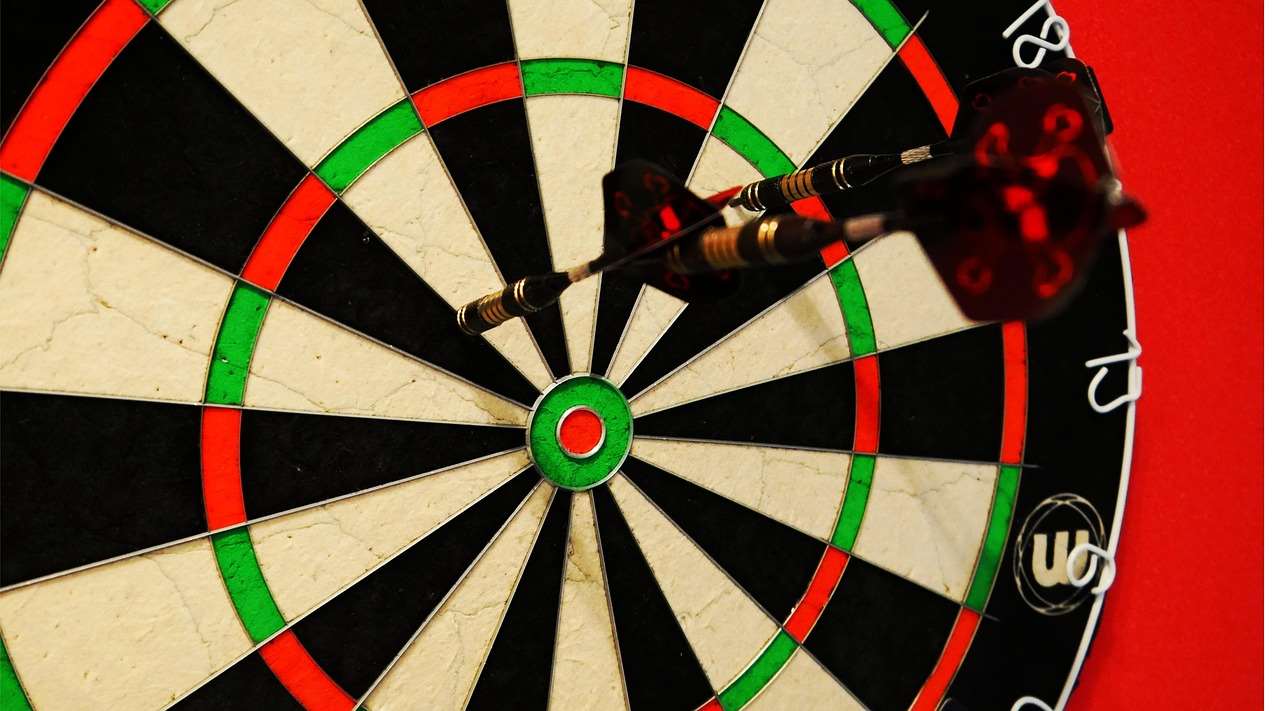Understanding the WDF oche standards dimensions is crucial for ensuring fair play and consistent scoring in darts. This article will provide you with a comprehensive breakdown of these official measurements, covering everything from height and length to key placement considerations, along with practical tips for setting up your own oche.
⚠️ Still Using Pen & Paper (or a Chalkboard)?! ⚠️
Step into the future! The Dart Counter App handles all the scoring, suggests checkouts, and tracks your stats automatically. It's easier than you think!
Try the Smart Dart Counter App FREE!Ready for an upgrade? Click above!
Understanding the World Darts Federation (WDF) Oche Standards Dimensions
When it comes to professional darts, the WDF oche standards dimensions are the gold standard for competition. Whether you’re aiming to compete professionally or simply want to replicate the conditions of a tournament at home, adhering to these specifications is essential. Deviations, even small ones, can affect a player’s throwing stance and accuracy. The oche, also known as the toe line or throw line, marks the point from which players must throw their darts.
It’s important to use proper measuring tools to ensure accuracy when setting up your dartboard and oche. A slight miscalculation can cause inconsistency in your game. Remember, consistent practice under standard conditions helps develop muscle memory and improves your overall performance. The official darts regulations cover many aspects of the game, but the oche dimensions are particularly vital.

Precise Oche Height Measurements
The height of the dartboard is arguably as important as the oche distance. While the oche dictates where you stand, the dartboard height determines your target. The bullseye, the center of the dartboard, must be exactly 5 feet 8 inches (1.73 meters) from the floor. This measurement is crucial for consistent aiming and shot placement. Consider using a laser level for precision when mounting the dartboard.
If you’re setting up a dartboard for younger players, or those with disabilities, you might consider Adapting dart game rules for children, which may include temporarily adjusting the dartboard height. However, for serious practice and competition, sticking to the standard height is highly recommended.
Oche Distance: The Crucial Measurement in Darts
The oche distance is the horizontal measurement from the face of the dartboard to the front edge of the oche. The official distance is 7 feet 9 1/4 inches (2.37 meters). This distance is meticulously chosen to provide a challenging yet achievable target for players. While casual games can be played with some leeway, serious players and competitions demand strict adherence to this standard. It is also important to take into account the thickness of the dartboard when determining the oche distance.
Maintaining this distance consistently is vital for developing your throwing technique. Mark the oche clearly and ensure that the flooring around the oche is level and stable to prevent any unintentional shifting of your stance during gameplay. A stable throwing surface is critical for balance and accuracy. Sometimes players adapt equipment. The only rule is to make sure it is within WDF oche standards dimensions.
Measuring the Oche Distance Accurately
Use a steel tape measure for the most accurate results. Start at the face of the dartboard (the surface where the darts land) and extend the tape measure directly to the floor. Mark this point. Then, measure 7 feet 9 1/4 inches (2.37 meters) horizontally from that point. This will be the front edge of your oche. Consider using a laser measure if available, as they are extremely accurate and can speed up the process.
Remember to double-check your measurements before permanently fixing your oche. It’s a good practice to have another person verify the measurements to minimize the chance of errors. This is especially crucial if you’re setting up a dartboard for a serious competition. You can even make adjustments when creative dart rules for parties and social gatherings are used.
Material and Placement Considerations for Your Oche
The oche itself can be made from a variety of materials. A simple piece of wood, metal, or even a raised strip of tape can serve as an oche. The key is that it provides a clearly defined boundary for players to stand behind. Many players prefer a slightly raised oche, as it provides a tactile reference point for their foot placement.

Placement is another vital consideration. The oche should be placed on a level surface that is free from obstructions. Ensure that there is ample space behind the oche for players to comfortably take their stance and throw their darts. Poor placement can lead to discomfort and affect a player’s performance. Consider adding a dart mat with a built-in oche to protect your floor and provide a consistent throwing surface.
Tips for Creating a Professional-Looking Oche
To create a truly professional-looking oche, consider using a pre-made oche or a high-quality piece of wood or metal. Ensure the edges are smooth and free from splinters or sharp corners. Paint the oche a bright, contrasting color to make it easily visible. Adding a non-slip surface to the top of the oche can also improve safety and prevent players from slipping during their throw.
Also, make sure that the oche is securely fastened to the floor to prevent it from moving during gameplay. This can be achieved using screws, adhesive, or even a heavy-duty dart mat with a built-in oche. In order to learn the Basic Darts Fundamentals for Beginners, it is helpful to have a good set-up and playing environment.
Addressing Common Oche Setup Mistakes
One of the most common mistakes is inaccurate measurement of the oche distance. Even a small error can significantly impact a player’s throwing stance and accuracy. Double-check your measurements and use a reliable measuring tool to avoid this issue. Another common mistake is placing the oche on an uneven surface. This can lead to instability and affect a player’s balance during their throw. Always ensure the oche is placed on a level surface.

Failing to secure the oche properly is another frequent oversight. A loose oche can shift during gameplay, disrupting a player’s rhythm and concentration. Use appropriate fasteners to ensure the oche remains firmly in place. Ignoring the surrounding space is another common issue. Make sure there is ample space behind the oche for players to comfortably take their stance and throw their darts. A cramped space can negatively affect a player’s performance. Many players adapt rules to their environment. However, the only rules for equipment are the WDF oche standards dimensions.
Troubleshooting Oche Setup Issues
If you’re experiencing issues with your oche setup, start by re-measuring the distance and height. Verify that the dartboard is mounted at the correct height and that the oche is positioned at the correct distance. Next, check the level of the floor and make sure the oche is placed on a level surface. If necessary, use shims or leveling compounds to correct any unevenness. Finally, ensure the oche is securely fastened to the floor and that there is ample space behind it for players to comfortably take their stance.
Remember, a properly set up oche is crucial for a fair and enjoyable game of darts. Taking the time to ensure accurate measurements and proper placement will pay dividends in terms of improved performance and consistent gameplay. These steps are important regardless of whether you are Simplified 501 game rules for novice players.

The Importance of Consistent Oche Dimensions for Training and Competition
Practicing with consistent WDF oche standards dimensions is crucial for developing muscle memory and improving your overall dart-throwing technique. When you consistently throw from the same distance and at the same target height, your body learns to automatically adjust to the conditions, leading to more accurate and consistent throws. This consistency is essential for success in competitive darts.
Furthermore, adhering to the WDF oche standards dimensions ensures that you are practicing under the same conditions as you will face in tournaments. This helps you prepare mentally and physically for the pressures of competition. By familiarizing yourself with the standard dimensions, you can eliminate any surprises or adjustments when you step up to the oche in a competitive setting.
Benefits of Adhering to WDF Standards
There are several benefits to adhering to WDF oche standards dimensions. First, it promotes fair play by ensuring that all players are competing under the same conditions. Second, it improves consistency and accuracy in dart throwing. Third, it helps prepare players for competitive tournaments. Fourth, it creates a more professional and enjoyable dart-playing experience. Finally, it increases the overall credibility of the sport.
Remember that even slight variations from the standard dimensions can affect your throwing technique and accuracy. It is therefore essential to take the time to ensure that your oche and dartboard are set up according to the WDF oche standards dimensions. This will help you improve your performance and enjoy the game of darts to its fullest.

Maintaining Your Oche for Long-Term Use
Once you’ve set up your oche according to WDF oche standards dimensions, it’s important to maintain it properly to ensure its longevity and continued accuracy. Regularly check the oche for any signs of damage or wear and tear. If you notice any cracks, splinters, or loose fasteners, address them promptly to prevent further damage.
Keep the area around the oche clean and free from debris. This will help prevent slips and falls and ensure that players have a clear and unobstructed throwing space. Periodically re-measure the oche distance and height to verify that they are still within the WDF oche standards dimensions. Over time, the oche may shift slightly due to movement or wear and tear, so it’s important to check it regularly.
Extending the Life of Your Oche
To extend the life of your oche, consider applying a protective coating or sealant. This will help protect it from moisture, scratches, and other forms of damage. Use a soft cloth and mild cleaner to clean the oche regularly. Avoid using harsh chemicals or abrasive cleaners, as they can damage the surface. If your oche is made of wood, consider applying a coat of varnish or polyurethane to protect it from moisture and prevent it from warping.
Properly maintaining your oche will not only extend its life but also ensure that it continues to provide a consistent and accurate throwing surface for years to come. Remember, a well-maintained oche is a key component of a professional and enjoyable dart-playing experience. You can even research fun dart game variations with modified rules to keep the game interesting.
Conclusion
Adhering to the WDF oche standards dimensions is paramount for ensuring fair play, consistent scoring, and ultimately, improving your dart-throwing skills. By understanding and implementing the correct height and distance measurements, as well as carefully considering the material and placement of your oche, you can create a professional-grade dart setup in your home or club. Remember to prioritize accuracy during setup, address common mistakes, and maintain your oche regularly. Now that you have a firm grasp of the WDF oche standards dimensions, it’s time to put your knowledge into practice and elevate your game. Get started today and experience the difference that precision makes! Consider researching other aspects of dart equipment to further improve your game.
Hi, I’m Dieter, and I created Dartcounter (Dartcounterapp.com). My motivation wasn’t being a darts expert – quite the opposite! When I first started playing, I loved the game but found keeping accurate scores and tracking stats difficult and distracting.
I figured I couldn’t be the only one struggling with this. So, I decided to build a solution: an easy-to-use application that everyone, no matter their experience level, could use to manage scoring effortlessly.
My goal for Dartcounter was simple: let the app handle the numbers – the scoring, the averages, the stats, even checkout suggestions – so players could focus purely on their throw and enjoying the game. It began as a way to solve my own beginner’s problem, and I’m thrilled it has grown into a helpful tool for the wider darts community.